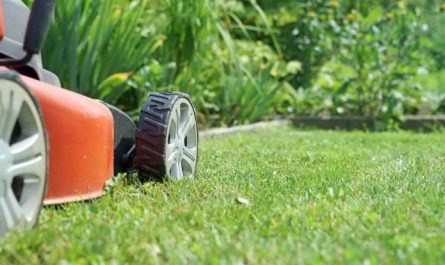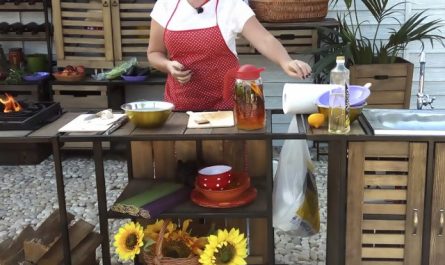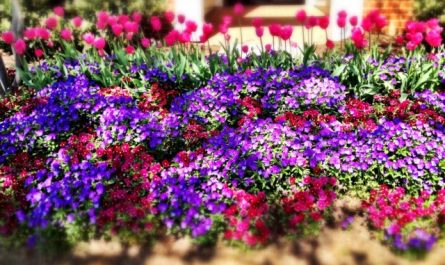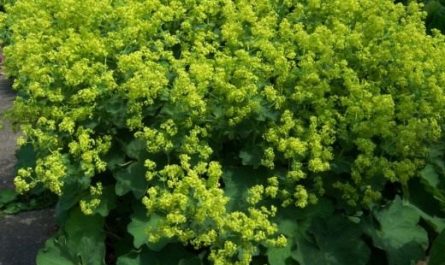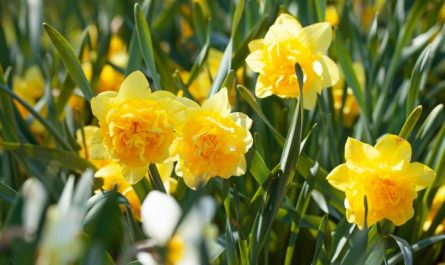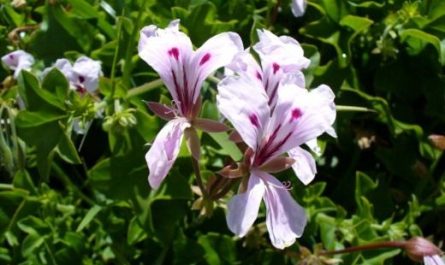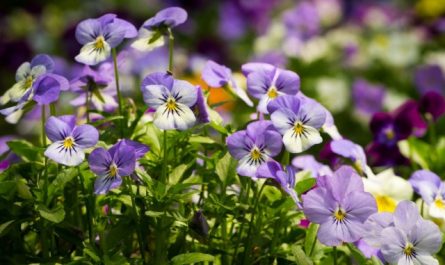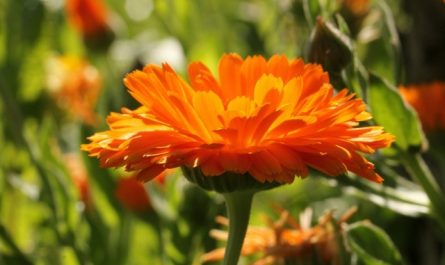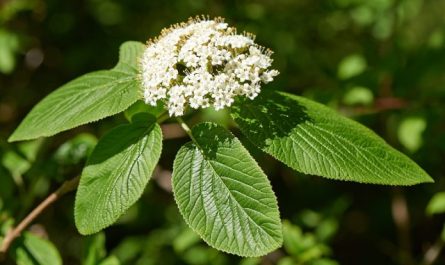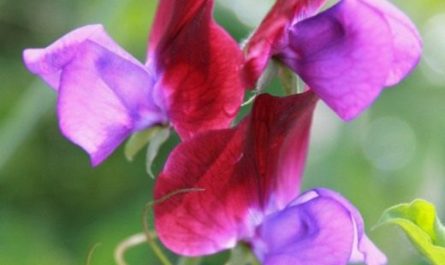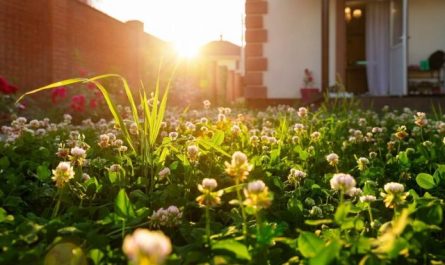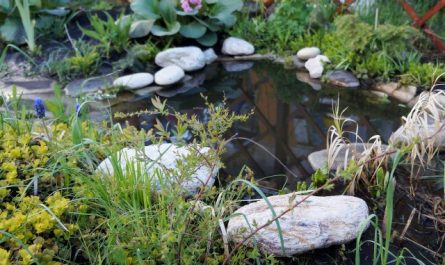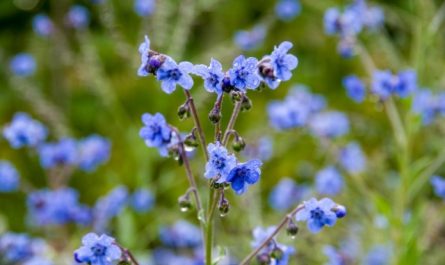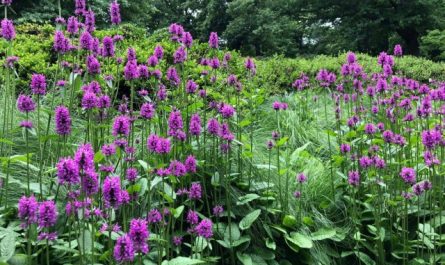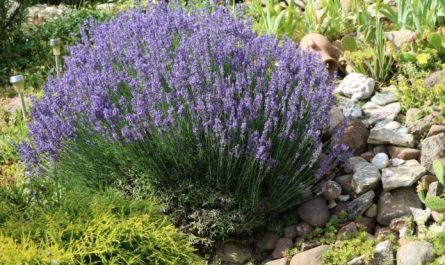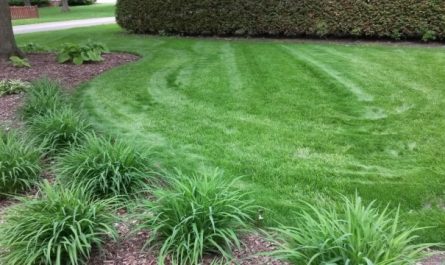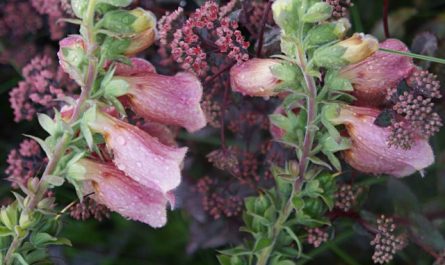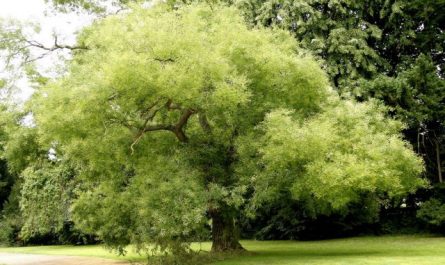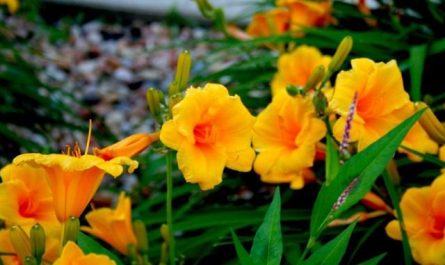Among the decorative types of flower beds, those that create the illusion of flowing flower streams stand out. This is a fashionable and original way to use your favorite plants. The effect of colored spots flowing out of containers like water transforms boring lawns and front gardens, bringing life to seasonal colors. It is not at all difficult to arrange a “stream” flower bed. All the work is done right on the spot, you just need to find a “support point” and bright plants. In flower “streams” you can give free rein to your imagination and play with color. And do not be afraid to make a mistake – if it happens, it is easily corrected.
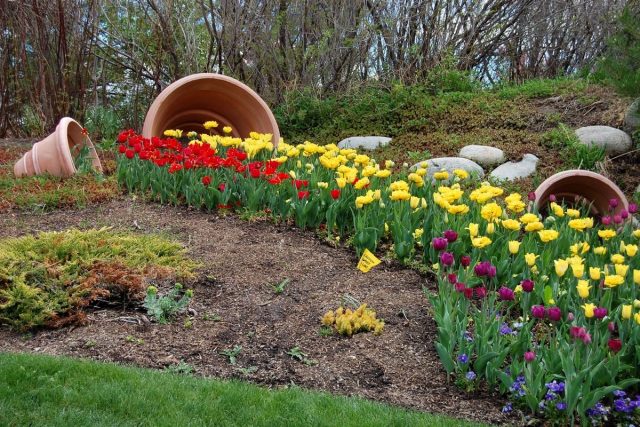
What flower beds are called “streams”?
Dry streams and imitation ponds without water have already become commonplace. Those who find the play of stone textures boring should pay attention to a more colorful type of “deception” – flower beds in which water is imitated by plants. The idea of stream flower beds from leading designers has conquered the world at landscape exhibitions. And today it is considered the most popular version of imitation with flowers. Thanks to its simplicity and accessibility, everyone can arrange a version of a “stream” flower bed on their own site. And you do not need to have special skills for this.
A “stream” flowerbed is a type of island flowerbed or a free-standing decorative flowerbed in which flowers seem to flow out of an “overturned” pot, vase or similar.
The flower stream consists of only two elements:
- “Source”, or point of outflow.
- Plants that create the illusion of a flow of flowers.
In design, you should always start from the first element. The difficulties associated with choosing the shape of the flowerbed and plants that can create the right texture and illusion are easily overcome. Multi-level, flat, ornate and simple, long and short, winding and linear – in choosing ideas, you are limited only by space and imagination.
Flower streams should be easily visible from all sides. They are usually placed on lawns, less often on paved areas, ground cover meadows and slopes. This is one of the best options for enlivening boring areas, designing on residual strips or empty areas, playing with the image of a front garden and a house, a gazebo and a recreation area.
Such flowerbeds are often tied to natural elevations, but it is not necessary to look for a slope and hills. After all, the container itself and the selection of plants can add volume to the composition.
Flower streams were “born” as decoration for sunny meadows. But if desired, they can be arranged in the shade, and even on damp soil near a real pond, just changing the assortment of plants to suit the peculiarities of unusual conditions.
Such flowerbeds are decorative as long as the plant species planted in them are beautiful – from several months to many years. They can be changed annually, choosing new annuals each season and even transformed from spring to autumn by replacing fading bushes. And they can be made perennial.

“Source” of the “stream” flowerbed
To create an illusion, first of all, you need to find a container from which the plants will “pour out” onto the site. Any analogue of a flower vase or pot is needed here, and there is plenty of scope for imagination.
Large garden vases on legs, ceramic and plastic pots, wooden tubs, huge amphorae, baskets, troughs, barrels, old carts, original bags, buckets, “wells” made of stone or brick… For small imitations, you can even use an old large saucepan or pot.
In a flower stream, you can use both new and “revived” old objects, worn out or broken vessels – one side of them will still be laid on the ground. Painting, painting, additional decor, ribbons will allow you to turn even an old trough into a beautiful decoration of the site.
Plants are not necessarily “aquatic”
It would seem that the flower flow should be tied to the imitation of water – at least in color. But the choice of plants is not limited to blue and light blue colors. The main thing is to achieve the illusion of a solid color and texture spot. But with the palette you can fantasize, at the behest of your heart, instead of the usual ones, creating yellow, white, silver, orange, purple, bloody, wine flowerbeds-“streams”.
It is not necessary to make a flowerbed-“stream” and monochromatic. Selecting only one species to fill the stream is beneficial for small flowerbeds. The larger the flowerbed, the more species of plants can be combined, merging several “streams” into one spot.
In fact, there are only two characteristics that are essential for plants in a stream bed:
- abundant and long flowering (an alternative is decorative, textured leaves);
- low growth – creeping, cushion or carpet-like character, the ability to form a continuous dense covering or the possibility of dense planting to imitate it.
When selecting, you should also consider the capriciousness of the plants, the complexity of care and their resistance. Since the “stream” flowerbed is almost always placed in an open area, candidate plants must withstand precipitation and drafts.
To decorate such a flower bed, bright, abundantly blooming annuals covered with flowers are most often used. Favorites are lobelia, pansies, marigolds, ageratum, petunias, coleuses, cineraria, calibrachoa, begonias, celosia, forget-me-nots, surfinias, pelargoniums, nasturtiums, verbenas and the like.
If you don’t have the opportunity or desire to replant your plants every year, you can choose a more durable alternative. Sedum, sedum, aubrieta, bugleweed, armeria, brunnera, low-growing bellflowers, alyssum, perennial violas, soapwort, geranium and pearlwort – the choice of bright groundcovers and textured cushion perennials is not so small. You can even create a stream from a white groundcover rose.
To create a flower stream, it is preferable to use seedlings or divisions in containers, which require less time to adapt and grow.
Additionally, at the base of the stream – right next to the pot – you can imitate thickets and add camouflaging and high elements to enhance the image of the “source”. They are selected when the main object has already been created and has reached maximum decorativeness. Bushes, cereals, large perennials are usually used if you also decorate the shorelines of reservoirs.
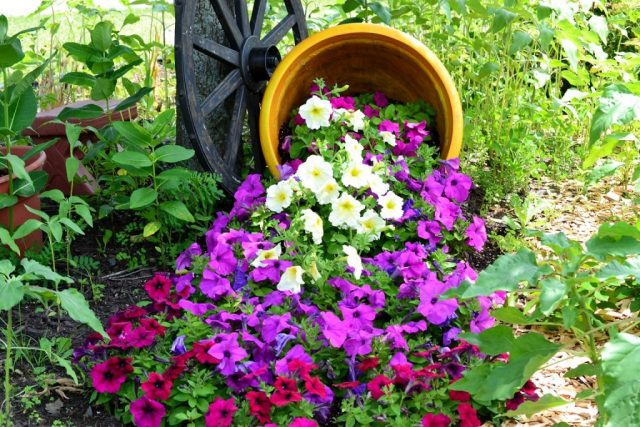
The banks and background of the “stream”
Banks are an optional element that can be omitted for multi-colored streams. An additional line of contrasting colors, stones or pebbles enhances the effectiveness of blue and blue compositions, imitating the contour of the coastline. It is worth deciding whether banks are needed after examining the main composition from a distance.
A beautiful lawn or ground cover is quite an attractive background for a flower stream. But the work on planting plants will spoil the “edge” and damage the turf one way or another. And not always when laying out a flower bed near the house or on an empty bed they are already “equipped” with a beautiful covering.
You can specially fill the area around with decorative materials or use only spots of beautiful mulch to shade the vessel. The main thing is to check how harmoniously gravel, crumbs, bark, colored sand or other types of decorative soils will be combined with the colors both in palette and texture. Harmony is needed, not distraction.
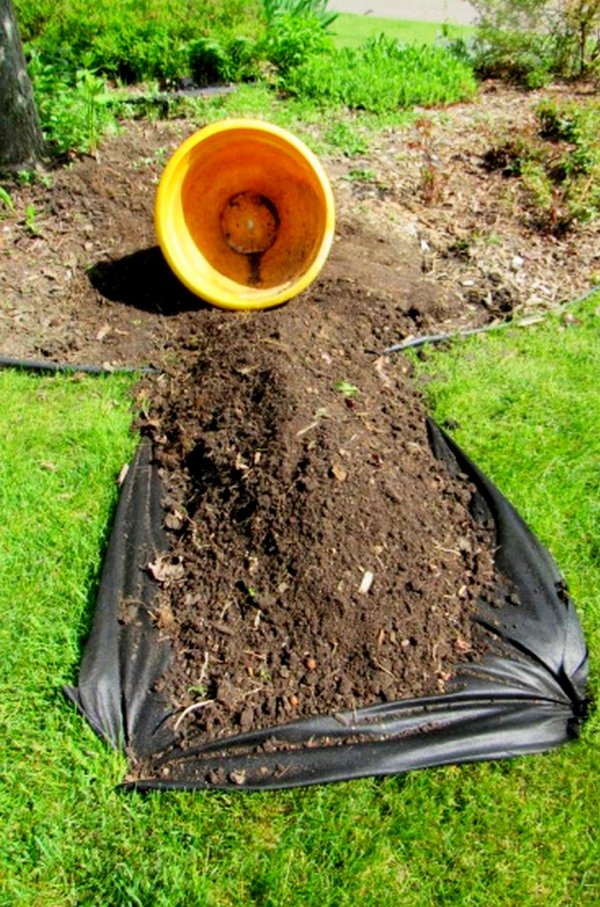
How to Make a Stream Flowerbed – Step-by-Step Instructions
It is much easier to implement such flowerbeds in practice than it seems. You can do without sketches for them, although they simplify the process. The flower stream is marked out directly on the ground, examining the selected clearing from afar and close up, from all the plans from which the finished object will be viewed while moving around the garden.
It is necessary to take into account perspective, the illusion of expanding space with curved forms and approaching with wide and rounded imitations, the influence of neighboring objects on visual perception.
The process of arrangement requires several steps:
- The visual center of the composition is determined by the point where the eye first falls from the path or recreation area. The source of the stream is placed there, laying the vessel on its side, at an angle that allows the water to flow freely, slightly digging it into the ground. Soil is poured inside for planting – at the same level as the soil line.
- The shape of the flowerbed itself is marked out using string or tape, trying to create natural flow lines and playing with wide and narrow places to find a balance of size and shape with the surrounding landscape. It is best to start with a simple, winding serpentine stream, assessing it from a distance and moving the lines to choose the ideal contour.
- You need to remove the soil along the outlined contour, slightly deepening the area, and then lay and secure the garden film, forever eliminating the risk that weeds will ruin the composition.
- If you are planning a multi-colored stream or planting plants of different heights, the planting zones are re-marked on the film.
- An even layer of fertile, loose soil with a neutral reaction is poured onto the film (the thickness should be sufficient for normal root development). The best option is a universal purchased substrate, but garden soil, improved with compost, sand and peat, and a mixture of equal parts of turf, leaf soil, sand and peat will also do.
- When starting to plant, it is worth first placing the pots with plants in places at a close distance, and then quickly plant each seedling in individual holes. The optimal distance for annuals is 15-20 cm.
- Planting is completed with mulching (if possible and desired) and watering.
For a “stream” flowerbed, you need to prepare for surprises in advance. Several spare plants placed on the terrace will help quickly fill in the gaps.
But the main secret of a spectacular flower stream is careful care. Plants need to be compensated for drought, provided with regular watering, fertilizing and removal of wilting flowers to extend the decorative period.
